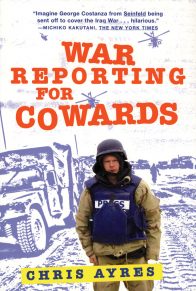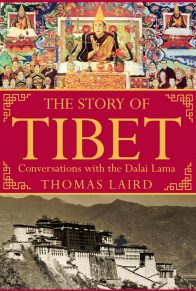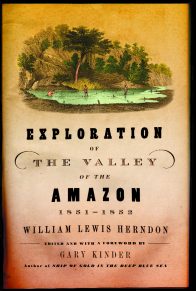The facts remained hidden behind a cover story for fifty years. The moment I stumbled upon the first hints of this adventure in the dusty files of the National Archives in Washington, D.C., I felt great sympathy with the men who had trekked through the Himalayas half a century ago.
Although I am an American, at forty-eight I have spent more of my life in the Himalayas than in the United States. I first arrived in Nepal in 1972, a nineteen-year-old kid, traveling alone overland from Europe. I have been based in Nepal since, and have made more than fifty treks in the Himalayas. In 1991 I became the Asiaweek reporter for Nepal.
For much of 1991 and 1992 I lived in Mustang, a remote Buddhist barony within Nepal that juts up through the Himalayas onto the Tibetan Plateau. The people, their culture, and their language are essentially Tibetan, though Nepal has ruled the area since about 1770. The feudal serfs of Mustang were liberated from their noble masters only in 1956. Incredible fourteenth-century Tibetan Buddhist murals have survived in Mustang, while the Chinese have destroyed 90 percent of such art in Tibet. Mustang became a time capsule of preinvasion Tibet–made more alluring by the fact that it was a forbidden land. The Nepalese government forbade foreigners to visit Mustang during the thirty years before my one-year permit was issued. Nepal and China had not forgotten the covert Central Intelligence Agency support for a Tibetan guerrilla movement based in Mustang after the Chinese invasion of Tibet in 1950. When the United States halted support to the Tibetans in the 1970s, China and Nepal agreed to disarm the guerrillas. Nepalese sensitivities to this Cold War history–and, some said, Chinese pressure–kept Mustang closed to all non-Nepalese during the 1970s and 1980s even as tourism became Nepal’s major industry. Mustang became the most coveted travel destination in Nepal.
In 1990 Nepal erupted into revolution. My photography of violent clashes in front of the Royal Palace in Kathmandu was published in many international news magazines. The new government that came to power felt I had risked my life getting pictures out to the world. The new prime minister asked me if there was something I wanted in Nepal, after having lived there for twenty years. I said I wanted to go to Mustang. So in 1991 the government issued me the first (and only) one-year travel permit for Mustang. I spent most of my time there shooting 50,000 photographs, working on a book that Peter Matthiessen and I eventually published, titled East of Lo Monthang: In the Land of Mustang.
At the end of my year in Mustang I was eager to fly to the National Archives in Washington, D.C. A number of searing experiences drove me there.
Weapons air-dropped into Mustang by the CIA have never been properly removed from the area. While I was there two teenagers each had blown off a hand with an old CIA-supplied grenade. They found a grenade abandoned beside a trail and tried to break it open. Another young man was killed in 1999 in a similar incident. Seeing the mangled bodies of the children of Mustang made America’s hidden history plain: it saddened and angered me.
I spoke with an old Tibetan guerrilla after I came out of Mustang. During one of his raids from Mustang into Tibet, he had acquired intelligence that gave the CIA six months’ advance warning of China’s first atomic test explosion. When I met him, he was ill, without family, living on charity from other Tibetans. CIA sources say that his atomic intelligence was, dollar for dollar, some of the most valuable intelligence of the entire Cold War. This hero remains unknown, though his eyes still shine with affection for his CIA trainers and love for American ideals.
The maimed boys and the abandoned intelligence hero became symbols to me. Back in the 1960s CIA operatives assured the Tibetan guerrillas that the United States wanted to help the Tibetans drive the Chinese out of Tibet. In fact the guerrillas served U.S. interests, not Tibetan ones. That was made obvious when the United States abruptly established diplomatic relations with China in the 1970s. Covert support to the Tibetans was cut off the next day. Hundreds of guerrillas died as a result of that U.S. abandonment. The weapons of that secret war were left in Mustang to kill innocent children. Its heroes were left without pensions. All of this was collateral damage of American actions, which America now denies ever happened. This cynical manipulation of people and history enraged me.
The fate of the maimed boys in Mustang was before me as I entered the National Archives in 1994 looking for declassified records about the CIA’s involvement in Mustang during the 1960s. I discovered in two hours that this U.S. history is still hidden–nearly all the government documents remained classified top secret. Yet during those same two hours I committed myself to an exploration that would ultimately last six years.
Instead of information about Tibetan guerrillas in Mustang, I found scattered declassified State Department documents about a vice consul named Douglas Mackiernan, Fulbright scholar Frank Bessac, White Russian refugee Vasili Zvansov, and their trip to Tibet in 1949 and 1950. The story of the Mackiernan party gripped me at once. Although most of the State Department documents about it were classified, and the CIA had released none of its documents, from the first moment I started reading the crinkling onion-skin letters, sent to the United States from China and India fifty years earlier, I was hooked.
I copied a few hundred pages of documents and flew home. By 1994 the computer revolution was starting to hit Kathmandu. One day, I ran Bessac’s name through a CD-ROM that had every telephone listing in the United States. On my third call from Kathmandu, I suddenly found myself talking to Frank Bessac–ex-CIA as well as Fulbright–in the United States. I was surprised when he told me that he had written about his experience for Life magazine in 1950. He warned me cryptically, “Henry Luce turned it into a Cold War yarn.” My mother-in-law, back in Los Angeles, had the magazine with Bessac’s story in my hands within weeks.
I audiotaped, and videotaped, dozens of hours of interviews with Bessac and then transcribed them. I eventually found seven surviving participants. Each document and each person led me to more people and more documents. I traveled from New Jersey to Dharamsala, India, to interview people. The story still eluded me. After five years of work, I discovered that the survivors did not understand the whole story. At the last moment, a previously unknown diary turned up. It took years for the story, as I now understand it, to take shape in my mind. It is not the same story that Life published in 1950. Nor is this just the story that the survivors themselves recall. Despite six years of work, there remain many mysteries here.
The Dalai Lama worried aloud to me when I interviewed him for this book. He wondered if revealing the covert American presence in Tibet in 1950 would give the Chinese some excuse for their invasion. After all, when China invaded Tibet in 1950 it said that its motivating reason was to halt the imperialist plots of American agents in Tibet. At the time, America denied that there were any American agents in Tibet prior to the invasion. Until now that denial has stood unchallenged. This book proves, for the first time, not only that there were Americans in Tibet, but that several agents, in and out of Tibet, worked actively to send military aid to the Tibetans prior to the Chinese invasion. It proves that the highest levels of the U.S. government were involved in that planning–despite government denials ever since. Tibetans were led to believe that the United States would help them if China invaded. This book shows, for the first time, why Tibetans felt betrayed by America after the Chinese invasion–and how American actions may have hastened the Chinese invasion of Tibet–tragically even while Americans on the ground tried to help the country.
There are many reasons why the CIA documents, which would reveal every detail about the story that is told here, remain secret even now, fifty years later. The Dalai Lama’s concern may be one of them. In addition, the United States prefers to blame China alone for the invasion, rather than to dilute Chinese guilt with any hint of U.S. involvement. But one reason stands out from all others. I believe that the CIA realizes it indirectly involved Tibet in the one of America’s first atomic intelligence operations led by Douglas Mackiernan back in 1950, at the birth of the Cold War, an operation that benefited the United States but that may have helped destroy Tibet. Nothing about American atomic intelligence operations in foreign countries has ever been declassified by the CIA. This may be the primary reason why this Tibetan chapter of U.S. history has remained hidden. It is not covert U.S. operations in Tibet that are being hidden, but the U.S. atomic secrets to which they are linked. And yet while the CIA operations revealed here were intended to be covert, at the time of these events the Chinese knew almost everything you are about to read. The failure to keep these operations secret may have helped precipitate the Chinese invasion of Tibet in 1950–though precipitating the invasion of Tibet was the opposite of America’s avowed intentions. The CIA seems to be hiding its own tragic mistakes behind the veil of national security.
Every CIA director, since 1950, as well as current director George Tenet, has known that these secret operations claimed the life of the first CIA undercover agent ever killed in the line of duty. He is honored by the CIA for his contributions and sacrifice. But the agency may not yet know precisely why that man died. Certainly, it has not linked his death to McCarthyism. A current employee of the CIA says that the administrators of the CIA believe that discussing the covert operation, in which that first agent died, would disrupt modern Sino-U.S. relations. Another CIA employee has written a letter that states there are practical national security reasons why the story behind his death cannot be revealed to the public. In the CIA foyer, near the wall where the CIA honors agents who have died in service to the United States, a line from Christian scripture is inscribed: “And ye shall know the truth, and the truth shall make you free.” I agree with these sentiments entirely, though now, more than ever, I am unsure if anyone ever knows the full truth, certainly with regard to these events.
Despite all that, readers will want to know if this is a true story. Many facts and many chapters of history are condensed and brought to life in this book, but much is also left out. I have not tried to write an academic history of Tibet. Rather, my aim is to penetrate to the furious, chaotic heart of Tibet’s fight for freedom at the moment when that freedom was lost. I try to reveal the essence of what happened, not through a recitation of every fact but by an understanding of what the Americans who lived through these events did and felt, and what motivated them.
My final answer is still the same: Yes, this is a true a story.
–Thomas Laird
Washington, D.C.; Coral Gables, Florida; New Haven, Connecticut; Hackettstown, New Jersey; Missoula, Montana; Kona, Hawaii; Boston, Massachusetts; New York City; Manhattan Beach, Albany, Berkeley, Santa Rosa, and Palo Alto, California; Gauhati, New Delhi, and Dharamsala, India; Lhasa, Tibet; Kathmandu, Nepal
August 1994–November 2001
PART ONE
WHY THEY WENT
“The only new thing in the world is the history you don’t know.”
–President Harry S. Truman
Shegar-Hunglung
The Tibet-Sinkiang Border
33.40 North, 87.20 West
2pm, April 29, 1950
The first gunshot was as loud inside the yak-wool tent as it was outside on the Tibetan Plateau. Frank Bessac spilled his wooden cup of salt and butter tea as he raced over to peer out of the tent flap. The two young Tibetan women busy serving tea only moments before crowded up behind him and looked over his shoulder toward his camp.
A hundred yards away a knot of horses and men circled Bessac’s canvas tent. Puffs of smoke raced off on the wind as several shooters on their horses lowered their rifles. A dozen short-legged Tibetan ponies pranced around on the treeless plain, silhouetted against the vast sky. One horseman climbed off his horse and advanced on the tent, shouting, with his gun drawn. In the distance, Bessac could see two horsemen approaching his tent from behind. The expedition was surrounded, and apparently everyone was in the tent as someone shouted back at the Tibetans.
Bessac cursed softly to himself.
‘damn! Travel for eight months and the first Tibetans we see start shooting.”
Bessac turned back to his hosts and for the fifth time tried his Mongolian and Chinese on the two Tibetan girls. In their fright, they clung to each other but looked at him just as blankly as they had before. The old man, who had slowly warmed to him as tea was made and served, now got up off his carpet by the dung-fueled fire and walked to the tent door.
Without ceremony, the old man started to push him out of the tent. Bessac grabbed the wool robe of the Tibetan, and tried to pull him toward his own tent, pleading. The old man quickly brushed off Bessac’s hands, but he paused and listened, as Bessac shouted desperately in English.
“Look, you’re Tibetan. You could talk to them. We’re Americans. We’re going to Lhasa! Meet the Dalai Lama. The government knows we are coming. Dalai Lama. Lhasa!”
When Bessac finished pleading, the eyes of the old man remained flat, seemingly devoid of any understanding. They could not understand him in English, Chinese, or Mongolian, and now clearly they were not even going to let him back inside their tent.
At sixteen thousand feet on the treeless Changthang Plateau, Bessac had only two options. Their tent or his. There was not even a rock to hide behind. The Tibetans were the first humans the expedition had met in two months. When Bessac turned back toward his camp and the swirling horses and men surrounding it, the rest of his party began to emerge from the canvas tent.
At a hundred yards, it was impossible to tell who was holding up the white flag. Doug Mackiernan and the three Russians were all dressed, like Bessac, in crudely sewn Kazak sheepskin robes. It was obvious to Frank that these were his friends, and not another party of Tibetans or Kazak, only because they had trekked together for so long.
When he saw them walk out of the tent, Frank started running back. He grabbed his glasses, trying to keep them on his head as he ran, because without them he would be virtually blind. The Tibetans gathered in front of the tent with their raised guns. Three men were in front, with the feeble-looking white flag advancing toward the guns. Behind them, someone crouched back, as if not sure he should advance unarmed on the Tibetans.
The Tibetans were startled–perhaps by the flag or by the fact that the foreigners walked confidently toward them with no weapons in their hands. Some of the Tibetans remained mounted, their horses shifting under them. Others stood on the ground. Yet they all kept their guns keenly focused on Bessac’s friends. Suddenly, one of the Tibetans in the front rank of gunmen stepped back, and Bessac stopped running.
‘don’t shoot,” Bessac said softly.
The Tibetan, who had retreated a step, fired first. A puff of white smoke rose into the wind. Then almost at once, all the other Tibetans fired, and a wave of smoke rose above their heads. The sound of the volley reached Bessac as he started running again toward his friends.
When the guns fired, the man who had held back dropped low and began to dodge between the bullets. Bessac’s heart leapt as he saw him make for the tent. Was it Mackiernan?
At the same moment, the other three men moved in an entirely different way. They twisted in midair, the way bodies do when bullets hit them. And then they went down hard, and at such unnatural angles.
Running as fast as he could at sixteen thousand feet, Bessac shouted at the gunmen in English.
‘don’t shoot. Dalai Lama! Dalai Lama! Lhasa!”
Bessac was now close enough to see the amazement on the Tibetans’ faces. As they turned around and saw him running toward them, they began to fire at him. The earth six feet to his left burst in a small fountain of dust. Another blast of dust flared three feet to his right.
His instincts, drilled into him at the Outfit’s camp on Catalina Island, took over–Bessac found himself kissing the earth behind a tiny hillock that he had not till now known was there. A bullet kicked up the dirt just above his hat. He waited, listening for the next bullet. The sweat that had broken out all over his body turned cold as he lay there. A minute passed, where he could hear only the wind.
He raised his head just enough so that his eyeglasses peeked over the earth at the gunmen. One of them pointed at Bessac, and then began to trace circles around his own eyes. Again, he pointed at Bessac and shouted at his friends. Seeing this, Bessac realized that he was the only person in his party wearing glasses and wondered what that meant to the Tibetans.
Shouting erupted among the Tibetans. Bessac listened, watched, and then stood up. No one pointed a gun at him. He held his ground and removed his glasses to wipe off the dirt, pondering his next move. The Tibetans watched intently as he cleaned his glasses. When he started walking slowly toward them, they were still watching him with their guns lowered.
At twenty yards, Bessac again started shouting in English, then Chinese, and then Mongolian, repeatedly.
“Lhasa! Dalai Lama! Lhasa!”
At five yards, the Tibetans raised their guns again. Bessac stopped walking, locked his eyes on them, and continued his mantra, softly now.
‘dalai Lama. Lhasa.”
The doubt in the eyes of the Tibetans grew, and they looked back and forth at one another, the barrels of their guns sinking ever closer toward the earth. Then the man who had retreated and fired first raised his gun and shook it at Bessac as he shouted, “Kowtow! Kowtow!”
He pointed his gun at the earth and shook it again as he yelled once more, “Kowtow!”
A Chinese phrase that Frank knew well. Bow down. Get on your knees. Submit to me. Show me your subservience.
Frank didn’t think; he spoke, in English, not loudly at first but his voice rose louder into the wind as his anger increased.
“I damn well won’t kowtow to you. You come up here shooting people, people invited by the Dalai Lama to come to Lhasa–and you want me to kowtow? I will not kowtow. No goddamned kowtow! You are going to kowtow to me when the Dalai Lama finds out what you have done! Americans don’t kowtow to anybody!”
The Tibetans watched blankly as Frank spoke. When he took off his glasses and waved them at the Tibetans, emphasizing his refusal to kowtow, some of the men smiled.
The grim-faced leader did not smile but only stared sternly at Bessac. When his men laughed, he leveled his gun barrel at Bessac, now at point-blank range. One of the laughing Tibetans behind the leader jerked up his head quickly to catch Bessac’s eye. He then cocked his head toward the ground, and raised a free hand as if firing his gun.
Bessac saw the mimed gestures. He could see the look of almost mock concern on the one Tibetan’s face as he again violently cocked his head toward the ground.
What the hell, he thought to himself as he let his pride go and sank to his knees.
A ripple of words erupted from the head Tibetan, his gun dropping back down toward the earth.
“La, la, la. Nyingje.”
The Tibetan who had mimed for him slung his rifle over his shoulder, stepped out of the group, and walked toward Bessac, pulling a goat-hair rope out of his robe. Bessac kept his eyes locked on the ground and did not move. The mime pulled Bessac’s hands behind his back and bound them. Bessac glanced up and saw the rest of the Tibetans rush over to the expedition’s camel loads, which sat outside the tent on the ground. Then the man who had bound his hands took off Bessac’s glasses, and his world three feet away immediately turned to a gray blur.
He listened to the Tibetans as they cracked open the crate with the machine guns. He could hear their startled shouts of surprise and glee when they found the gold bars. He heard the clicking of a Geiger counter as it was flicked on and off, and then what sounded like a rock smashing into Mackiernan’s machine. Bessac only hoped they would not play with the grenades.
Those were all smaller, distant things. Most of his attention was focused on a human foot, which lay quite near him in the dirt. It belonged to one of his friends. A crudely sewn sheepskin covered the leg. Five feet away, the face that belonged to the foot was a complete blur. As his world shrank, Bessac knew he should try to get closer so he could see the face and check if he was alive. Instead, he looked at the foot and the robe and remembered when the Kazak sold them the sheepskins. He thought about how they measured one another and cut the skins. He remembered sitting in the Kazak yurt turning the fleece in and the leather out, stitching up the robes as the snow fell outside.
“Warm enough to get you to Tibet, doesn’t matter what they look like. And I guess the Tibetans won’t be expecting diplomats in tuxedos.”
Who said that? Who was that lying in front of him, in such an odd and uncomfortable position, lying so still?
Excerpted from Into Tibet: The CIA’s First Atomic Spy and His Secret Expedition to Lhasa
” Copyright 2002 by Thomas Laird. Reprinted with permission from Grove Atlantic, Inc. All rights reserved.















